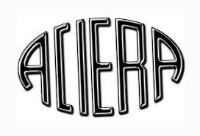Search Results (Searched for: )
- Thayloreing
- Thayloreing
01 Aug 2024 12:39
Replied by Thayloreing on topic How to make Linuxcnc open with the feed and override 0?
How to make Linuxcnc open with the feed and override 0?
Category: General LinuxCNC Questions
- Cant do this anymore bye all

01 Aug 2024 12:12
Replied by Cant do this anymore bye all on topic help with installation
help with installation
Category: Installing LinuxCNC
- cnbbom
- cnbbom
01 Aug 2024 12:07
- thomaseg
- thomaseg
01 Aug 2024 12:01
- DPFlex
- DPFlex
01 Aug 2024 10:52
EtherCAT config: one Slave supports 3 modules (motors) was created by DPFlex
EtherCAT config: one Slave supports 3 modules (motors)
Category: EtherCAT
- Aciera

01 Aug 2024 10:40 - 01 Aug 2024 10:52
Replied by Aciera on topic Can LinuxCNC work on a Rotary Transfer Machine?
Can LinuxCNC work on a Rotary Transfer Machine?
Category: General LinuxCNC Questions
- Aciera

01 Aug 2024 10:29 - 01 Aug 2024 10:31
Replied by Aciera on topic CNC lathe Multi Channel
CNC lathe Multi Channel
Category: General LinuxCNC Questions
- Aciera

01 Aug 2024 10:18
Replied by Aciera on topic Can LinuxCNC work on a Rotary Transfer Machine?
Can LinuxCNC work on a Rotary Transfer Machine?
Category: General LinuxCNC Questions
- gpasotti

01 Aug 2024 09:25
Replied by gpasotti on topic Can LinuxCNC work on a Rotary Transfer Machine?
Can LinuxCNC work on a Rotary Transfer Machine?
Category: General LinuxCNC Questions
- JamesHoward
- JamesHoward
01 Aug 2024 09:22 - 01 Aug 2024 09:56
Replied by JamesHoward on topic Is a parport fast enough?
Is a parport fast enough?
Category: General LinuxCNC Questions
- endian

01 Aug 2024 09:13 - 01 Aug 2024 09:32
Replied by endian on topic Exotic data types in .xml config
Exotic data types in .xml config
Category: EtherCAT
- JT

01 Aug 2024 09:08
- Aciera

01 Aug 2024 07:37
Replied by Aciera on topic help with millrun and/or custom Z-X-A(or C) lathe/machine
help with millrun and/or custom Z-X-A(or C) lathe/machine
Category: Fusion 360
- Lpkkk
- Lpkkk
01 Aug 2024 07:30 - 01 Aug 2024 08:28
Replied by Lpkkk on topic Remora - ethernet NVEM / EC300 / EC500 cnc board
Remora - ethernet NVEM / EC300 / EC500 cnc board
Category: Computers and Hardware
- Cant do this anymore bye all

01 Aug 2024 07:07
Replied by Cant do this anymore bye all on topic Is a parport fast enough?
Is a parport fast enough?
Category: General LinuxCNC Questions
Time to create page: 0.625 seconds
